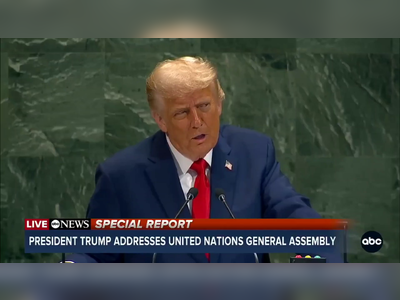French Nuclear Waste Just Inches Beneath Our Feet
For the past five years, every piece of nuclear waste produced by France has been lurking just inches beneath our feet.
Although spent nuclear fuel from power plants can be reused at least once, we took a trip to Normandy to visit the world's largest reprocessing facility and discovered how useful materials are extracted from spent fuel assemblies, as well as how the country deals with the most challenging and highly radioactive nuclear waste.
France has no intention of derailing its nuclear journey. The country has long been one of Europe's energy superpowers, thanks to its fleet of nuclear power plants a status it intends to maintain for decades. The French were among the nations lobbying for nuclear energy to be declared green by the European Union. Contrary to gradually dismantling its nuclear infrastructure, France's current energy strategy aims to further expand its atomic park.
Existing facilities, originally designed for a 30-year operation, are being extended to 50-60 years, with plans to build at least six, but possibly up to fourteen new reactors alongside the currently operating 56. This intention was shared by a French Prime Ministerial official during a background discussion in Paris, an event we also attended. Openly, it was admitted that France could not achieve the EU's goal of sourcing 44 percent of its energy from renewables by 2050. Instead, the focus is on what they consider achievable: decarbonizing their energy production, which according to them and similarly to the Hungarian government's view can only be done by partially replacing fossil fuels with nuclear power.
However, replacing fossil fuels with nuclear energy is not Ireland's sole strategy, especially given climate change challenges. Increasingly unbearable summers evaporate and heat up river waters, posing significant challenges for cooling reactors during peak temperatures, thus requiring a reduction in their output. This difficulty, along with aging plants, contributed to France shifting from its usual role as an energy exporter to becoming an importer in the summer of 2022. To support the wobbly nuclear summers, France is boosting its renewable energy efforts, doubling the pace of solar installations, and continuing its wind turbine deployments at the current rate, with a greater emphasis on offshore plants.
"There's no time to debate nuclear versus renewables. We should do both!" said a government official during the background discussion. Indeed, time is pressing for the French; President Emmanuel Macron has set a goal of reducing emissions by 55 percent from the 1990 levels by 2030, equating to a 4-5 percent decrease annually double the rate of emission reduction over the past five years. Critics express skepticism toward the current energy strategy, arguing that it's overly vague on the acceleration of renewables and too specific about nuclear energy, fearing an imbalance favoring nuclear power. Given that nuclear plants generate about 70-75 percent of France's annual electricity consumption 438 terawatt-hours last year these fears are not unfounded.
RECYCLING NUCLEAR
The mathematics is simple: more nuclear power plants mean more spent fuel and, consequently, more nuclear waste. Although it is highly unlikely that nuclear energy will ever be portrayed as a cyclical form of energy production, recycling plays a crucial role. The spent fuel can be reprocessed to extract and reuse its components, albeit currently only once. Only a minor portion of the cassettes, essentially their metal cladding, turns into irretrievable nuclear waste after use.
Given the trajectory of its energy strategy, France must, therefore, increase its reprocessing capacities and definitively solve the permanent disposal of nuclear waste a challenge as there is yet no facility for permanent disposal in France, with all nuclear waste temporarily stored awaiting a final decision. Plans are in place to dig a permanent storage facility near Bure in northeastern France, approximately 500 meters deep, alongside constructing a new reprocessing plant. This facility would be the second of its kind in France the first being the world’s largest, located in Normandy, which we had the chance to visit in March at the invitation of the French Ministry of Foreign Affairs.
ORANO LA HAGUE
Situated about 20 kilometers from Cherbourg, near the town of La Hague, stands France's sole facility for reprocessing spent nuclear fuel elements part of the Orano Group, which also engages in uranium mining. Carved out from the Norman hills, the site spans over three kilometers in length and one and a half kilometers in width. Established in 1961 and operational since 1966, the facility receives an annual intake of a thousand tons of used fuel partly domestic but also from countries like Germany, Belgium, Italy, China, and Japan. Its actual capacity far exceeds the annual production, rated at 1700 tons. However, approximately 300,000 tons of spent fuel have been generated by the world's nuclear power plants to date, with the quantity increasing by ten thousand tons each year. Meanwhile, only a handful of facilities like Orano's exist globally.
Spent fuel elements are transported to Normandy by ship or train, covering the final kilometers by truck. These elements are shipped in containers approximately 3.5-5 meters long and weighing around 110 tons, each holding up to five units 6 tons of fuel elements.
THE PROCESS
The reprocessing operation is fully automated and largely hidden from human eyes. The initial steps are somewhat viewable: the exact method by which the machine extracts spent fuel elements from their protective casings is obscured by shadows and the concrete floor, although part of the robot can be observed from an upper level through inch-thick glass windows.
After extraction, the fuel elements are moved through a gate to an adjacent building and into a nine-meter-deep cooling pool. This pool, which maintains water at 35 degrees Celsius, is designed for the cooling of these 60-70 Celsius degrees hot materials. Safety measures around the pool include lifebuoys, though it's generally a bad sign if someone goes into the water without protective gear and of their own volition.
The cassettes spend 3-5 years underwater before proceeding to the next step, which is entirely hidden from view. The sufficiently cooled fuel elements are removed from the pool and passed through a machine reminiscent of a giant meat slicer, chopping them into small pieces. The chopped-up nuclear "meat" is then separated into three parts, also out of visitors' sight. The valuable material is dipped in nitric acid and then divided into plutonium and uranium, with contaminants being filtered out.
This process results in nuclear waste constituting 4 percent of the fuel element, with the valuable material being 1 percent plutonium and 94 percent uranium. They undergo further treatment: the powdered plutonium oxide is transported to Orano Melox, a facility near Avignon, where it's mixed with depleted uranium oxide to create MOX fuel. Certain nuclear power plants, such as those in France, which use 25 percent MOX fuel for electricity production, can utilize this. However, MOX utilization is limited; once depleted, this fuel cannot currently be recycled. Work is underway on a second-cycle reprocessing method, which the proposed new Orano facility may be capable of performing.
The uranium compound produced, uranyl nitrate, is sent to Orano Tricastin, another facility not far from Avignon, where it's temporarily stored. Although there's no current production of new fuel from this material, Orano’s experts claim to possess the necessary know-how.
UNDER OUR FEET
The handling of the 4 percent nuclear waste is managed from a separate building, where visitors are allowed but photography is prohibited. Here, controllers ascend narrow steps to reach their designated metal ramps, with machinery being monitored through the same inch-thick, orange glass windows as seen at the processing plant's entrance. If needed, robotic arms can be remotely operated to intervene in the process.
The waste, separated from plutonium and uranium through nitric acid treatment, contains most of the radioactivity from the used fuel elements. This material is mixed with special glass at 1100 Celsius degrees to chemically stabilize it in a process known as vitrification. The resulting mass is poured into 175-liter steel containers, resembling oversized soda syphons. The spent metal parts of the fuel element don't require vitrification; they are simply compacted and packed into similar containers.
These containers are initially stored beneath the floor of a not overly large hall, with nine stacked atop each other. In this room, the entirety of France's five years’ worth of nuclear power waste can be accommodated. After several years, the containers are moved to a separate Orano facility exclusively intended for temporary waste storage, where they await transportation to a final, deep geological storage site.
Currently, such a facility exists in Finland, with Sweden’s expected to open soon. Orano has plans for excavating its own on French soil. Nuclear waste from other nations is returned to the sender, just as with the valuable reprocessed materials. The intense radiation of this waste takes approximately 300 years to diminish significantly, yet it remains hazardous for around 240,000 years.
To help visualize the entire process, particularly the steps occurring behind the scenes, Orano has created an explanatory video.
NUCLEAR WASTE IN HUNGARY
But what about Hungary? Currently, the situation is at a standstill. Ideally, Russia would handle the reprocessing for us, but since the mid-1990s, no spent fuel has been sent back to them from the Paks Nuclear Power Plant, except for the damaged cassettes from a 2003 incident. At present, Russia does not offer spent fuel management services to the plant. The spent fuel, depleted over 4-5 years, is stored at the Spent Fuel Temporary Storage Facility (SFTSF) located next to the Paks Nuclear Power Plant.
Even if the spent cassettes were returned, the Remix fuel produced in Russia from them would not be usable in the currently operational blocks of Paks. However, they could potentially be utilized in the delayed Paks II blocks. János Péter, CEO of the MVM Paks Nuclear Power Plant, mentioned to Világgazdaság last year that it is "theoretically conceivable" to send the used fuel generated over the past 20 years in Hungary for reprocessing and later reuse it domestically as new fuel.
We would not only receive the useful material back but the waste as well. As mentioned, its radioactivity is very high, requiring deep geological storage far below ground and away from groundwater – similar to the granite-embedded Finnish and the upcoming Swedish storage facilities, while the French one will be in clay. In Hungary, the Radioactive Waste Management Company is exploring potential sites for a final waste repository, conducting trial borings in the Mecsek region.
France has no intention of derailing its nuclear journey. The country has long been one of Europe's energy superpowers, thanks to its fleet of nuclear power plants a status it intends to maintain for decades. The French were among the nations lobbying for nuclear energy to be declared green by the European Union. Contrary to gradually dismantling its nuclear infrastructure, France's current energy strategy aims to further expand its atomic park.
Existing facilities, originally designed for a 30-year operation, are being extended to 50-60 years, with plans to build at least six, but possibly up to fourteen new reactors alongside the currently operating 56. This intention was shared by a French Prime Ministerial official during a background discussion in Paris, an event we also attended. Openly, it was admitted that France could not achieve the EU's goal of sourcing 44 percent of its energy from renewables by 2050. Instead, the focus is on what they consider achievable: decarbonizing their energy production, which according to them and similarly to the Hungarian government's view can only be done by partially replacing fossil fuels with nuclear power.
However, replacing fossil fuels with nuclear energy is not Ireland's sole strategy, especially given climate change challenges. Increasingly unbearable summers evaporate and heat up river waters, posing significant challenges for cooling reactors during peak temperatures, thus requiring a reduction in their output. This difficulty, along with aging plants, contributed to France shifting from its usual role as an energy exporter to becoming an importer in the summer of 2022. To support the wobbly nuclear summers, France is boosting its renewable energy efforts, doubling the pace of solar installations, and continuing its wind turbine deployments at the current rate, with a greater emphasis on offshore plants.
"There's no time to debate nuclear versus renewables. We should do both!" said a government official during the background discussion. Indeed, time is pressing for the French; President Emmanuel Macron has set a goal of reducing emissions by 55 percent from the 1990 levels by 2030, equating to a 4-5 percent decrease annually double the rate of emission reduction over the past five years. Critics express skepticism toward the current energy strategy, arguing that it's overly vague on the acceleration of renewables and too specific about nuclear energy, fearing an imbalance favoring nuclear power. Given that nuclear plants generate about 70-75 percent of France's annual electricity consumption 438 terawatt-hours last year these fears are not unfounded.
RECYCLING NUCLEAR
The mathematics is simple: more nuclear power plants mean more spent fuel and, consequently, more nuclear waste. Although it is highly unlikely that nuclear energy will ever be portrayed as a cyclical form of energy production, recycling plays a crucial role. The spent fuel can be reprocessed to extract and reuse its components, albeit currently only once. Only a minor portion of the cassettes, essentially their metal cladding, turns into irretrievable nuclear waste after use.
Given the trajectory of its energy strategy, France must, therefore, increase its reprocessing capacities and definitively solve the permanent disposal of nuclear waste a challenge as there is yet no facility for permanent disposal in France, with all nuclear waste temporarily stored awaiting a final decision. Plans are in place to dig a permanent storage facility near Bure in northeastern France, approximately 500 meters deep, alongside constructing a new reprocessing plant. This facility would be the second of its kind in France the first being the world’s largest, located in Normandy, which we had the chance to visit in March at the invitation of the French Ministry of Foreign Affairs.
ORANO LA HAGUE
Situated about 20 kilometers from Cherbourg, near the town of La Hague, stands France's sole facility for reprocessing spent nuclear fuel elements part of the Orano Group, which also engages in uranium mining. Carved out from the Norman hills, the site spans over three kilometers in length and one and a half kilometers in width. Established in 1961 and operational since 1966, the facility receives an annual intake of a thousand tons of used fuel partly domestic but also from countries like Germany, Belgium, Italy, China, and Japan. Its actual capacity far exceeds the annual production, rated at 1700 tons. However, approximately 300,000 tons of spent fuel have been generated by the world's nuclear power plants to date, with the quantity increasing by ten thousand tons each year. Meanwhile, only a handful of facilities like Orano's exist globally.
Spent fuel elements are transported to Normandy by ship or train, covering the final kilometers by truck. These elements are shipped in containers approximately 3.5-5 meters long and weighing around 110 tons, each holding up to five units 6 tons of fuel elements.
THE PROCESS
The reprocessing operation is fully automated and largely hidden from human eyes. The initial steps are somewhat viewable: the exact method by which the machine extracts spent fuel elements from their protective casings is obscured by shadows and the concrete floor, although part of the robot can be observed from an upper level through inch-thick glass windows.
After extraction, the fuel elements are moved through a gate to an adjacent building and into a nine-meter-deep cooling pool. This pool, which maintains water at 35 degrees Celsius, is designed for the cooling of these 60-70 Celsius degrees hot materials. Safety measures around the pool include lifebuoys, though it's generally a bad sign if someone goes into the water without protective gear and of their own volition.
The cassettes spend 3-5 years underwater before proceeding to the next step, which is entirely hidden from view. The sufficiently cooled fuel elements are removed from the pool and passed through a machine reminiscent of a giant meat slicer, chopping them into small pieces. The chopped-up nuclear "meat" is then separated into three parts, also out of visitors' sight. The valuable material is dipped in nitric acid and then divided into plutonium and uranium, with contaminants being filtered out.
This process results in nuclear waste constituting 4 percent of the fuel element, with the valuable material being 1 percent plutonium and 94 percent uranium. They undergo further treatment: the powdered plutonium oxide is transported to Orano Melox, a facility near Avignon, where it's mixed with depleted uranium oxide to create MOX fuel. Certain nuclear power plants, such as those in France, which use 25 percent MOX fuel for electricity production, can utilize this. However, MOX utilization is limited; once depleted, this fuel cannot currently be recycled. Work is underway on a second-cycle reprocessing method, which the proposed new Orano facility may be capable of performing.
The uranium compound produced, uranyl nitrate, is sent to Orano Tricastin, another facility not far from Avignon, where it's temporarily stored. Although there's no current production of new fuel from this material, Orano’s experts claim to possess the necessary know-how.
UNDER OUR FEET
The handling of the 4 percent nuclear waste is managed from a separate building, where visitors are allowed but photography is prohibited. Here, controllers ascend narrow steps to reach their designated metal ramps, with machinery being monitored through the same inch-thick, orange glass windows as seen at the processing plant's entrance. If needed, robotic arms can be remotely operated to intervene in the process.
The waste, separated from plutonium and uranium through nitric acid treatment, contains most of the radioactivity from the used fuel elements. This material is mixed with special glass at 1100 Celsius degrees to chemically stabilize it in a process known as vitrification. The resulting mass is poured into 175-liter steel containers, resembling oversized soda syphons. The spent metal parts of the fuel element don't require vitrification; they are simply compacted and packed into similar containers.
These containers are initially stored beneath the floor of a not overly large hall, with nine stacked atop each other. In this room, the entirety of France's five years’ worth of nuclear power waste can be accommodated. After several years, the containers are moved to a separate Orano facility exclusively intended for temporary waste storage, where they await transportation to a final, deep geological storage site.
Currently, such a facility exists in Finland, with Sweden’s expected to open soon. Orano has plans for excavating its own on French soil. Nuclear waste from other nations is returned to the sender, just as with the valuable reprocessed materials. The intense radiation of this waste takes approximately 300 years to diminish significantly, yet it remains hazardous for around 240,000 years.
To help visualize the entire process, particularly the steps occurring behind the scenes, Orano has created an explanatory video.
NUCLEAR WASTE IN HUNGARY
But what about Hungary? Currently, the situation is at a standstill. Ideally, Russia would handle the reprocessing for us, but since the mid-1990s, no spent fuel has been sent back to them from the Paks Nuclear Power Plant, except for the damaged cassettes from a 2003 incident. At present, Russia does not offer spent fuel management services to the plant. The spent fuel, depleted over 4-5 years, is stored at the Spent Fuel Temporary Storage Facility (SFTSF) located next to the Paks Nuclear Power Plant.
Even if the spent cassettes were returned, the Remix fuel produced in Russia from them would not be usable in the currently operational blocks of Paks. However, they could potentially be utilized in the delayed Paks II blocks. János Péter, CEO of the MVM Paks Nuclear Power Plant, mentioned to Világgazdaság last year that it is "theoretically conceivable" to send the used fuel generated over the past 20 years in Hungary for reprocessing and later reuse it domestically as new fuel.
We would not only receive the useful material back but the waste as well. As mentioned, its radioactivity is very high, requiring deep geological storage far below ground and away from groundwater – similar to the granite-embedded Finnish and the upcoming Swedish storage facilities, while the French one will be in clay. In Hungary, the Radioactive Waste Management Company is exploring potential sites for a final waste repository, conducting trial borings in the Mecsek region.
Translation:
Translated by AI
AI Disclaimer: An advanced artificial intelligence (AI) system generated the content of this page on its own. This innovative technology conducts extensive research from a variety of reliable sources, performs rigorous fact-checking and verification, cleans up and balances biased or manipulated content, and presents a minimal factual summary that is just enough yet essential for you to function as an informed and educated citizen. Please keep in mind, however, that this system is an evolving technology, and as a result, the article may contain accidental inaccuracies or errors. We urge you to help us improve our site by reporting any inaccuracies you find using the "Contact Us" link at the bottom of this page. Your helpful feedback helps us improve our system and deliver more precise content. When you find an article of interest here, please look for the full and extensive coverage of this topic in traditional news sources, as they are written by professional journalists that we try to support, not replace. We appreciate your understanding and assistance.



















